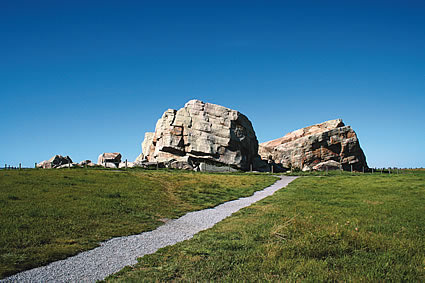Rolling rocks and history
If you think there’s anything plain about Alberta’s plains, think again

Although Alberta is considered one of the prairie provinces, the geological formations of the southern half of the province are varied and often surprising. And many have interesting tales to tell.
The Crowsnest Trail in southwestern Alberta runs through the historic mining towns of Blairmore, Coleman and Hillcrest. Here you will find Frank Slide.
The little town of Frank was located at the base of Turtle Mountain, which local aboriginal people called The Mountain That Walks. In the early hours of April 29, 1903, 82 million tonnes of limestone sheared off the side of Turtle Mountain, tumbling down and devastating the town of Frank. In the community of 600 people, 70 were killed.
Today, an interpretive centre is tucked into the detritus of the slide. Walking along the paths through the rubble is a sobering and fascinating experience.
Whales and bison
Alberta’s foothills are prime ranching and grazing land, and driving along Highway 22, you’ll see particular hills known as the Whalebacks because of their resemblance to surfacing humpback whales.
Along the ridges of the Whalebacks and the foothills to the east, you may see stony outcroppings. First Nations people once used these areas as buffalo jumps; hunters would chase bison over a precipice. While there are many such sites throughout the area, the most significant can be found at Head-Smashed-In Buffalo Jump near Fort Macleod. A world-class interpretive centre has been develped here by the local First Nations.
Distant traveller
Along Highway 7, between the communities of Okotoks and Black Diamond, is the Okotoks Erratic. Also known as Big Rock—a name reflected in one of southern Alberta’s best known breweries—the Okotoks Erratic is the world’s largest known glacial rock transported by a glacier from its place of origin. Geologists believe the rock was deposited more than 10,000 years ago during the last ice age.






